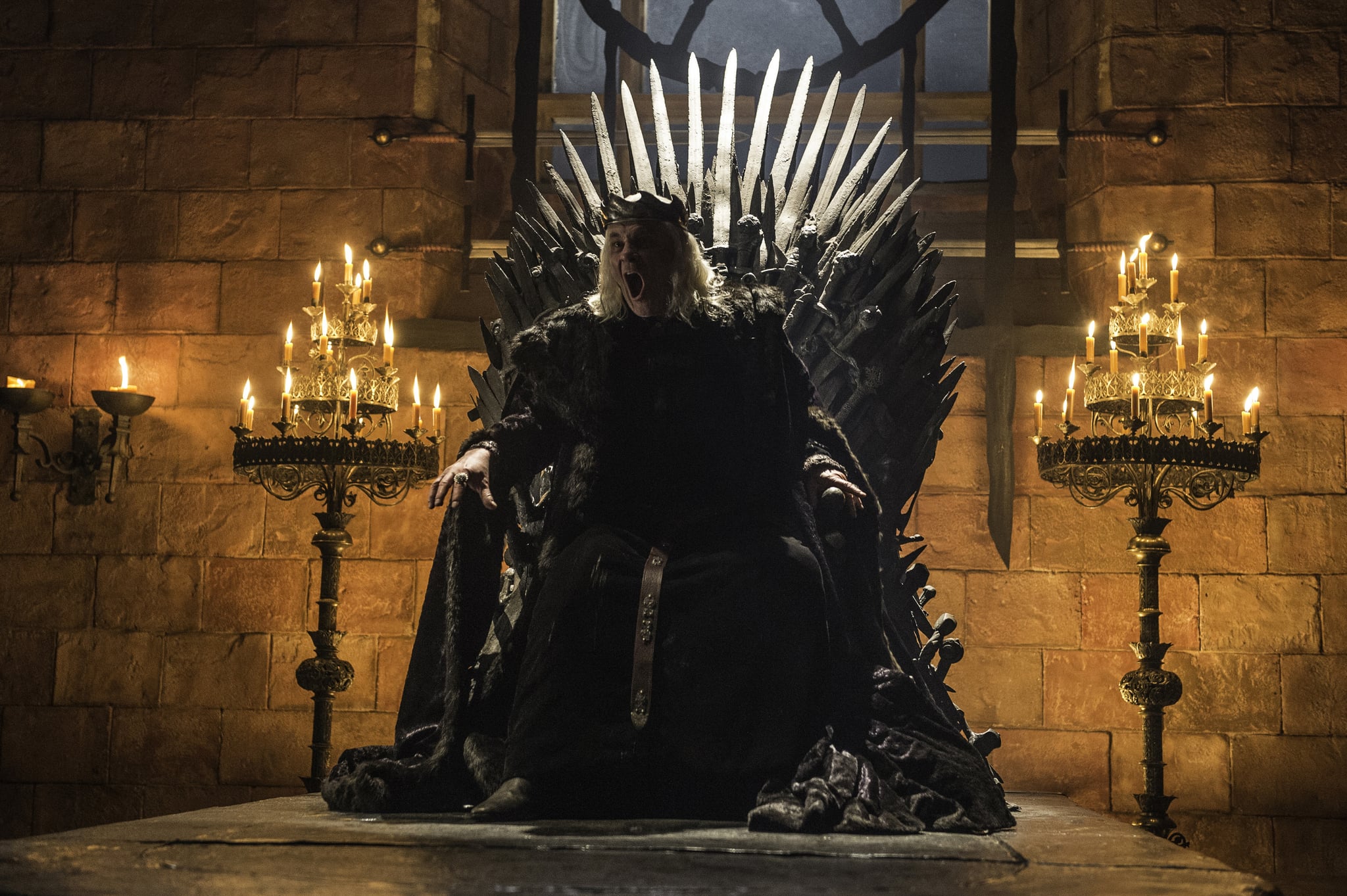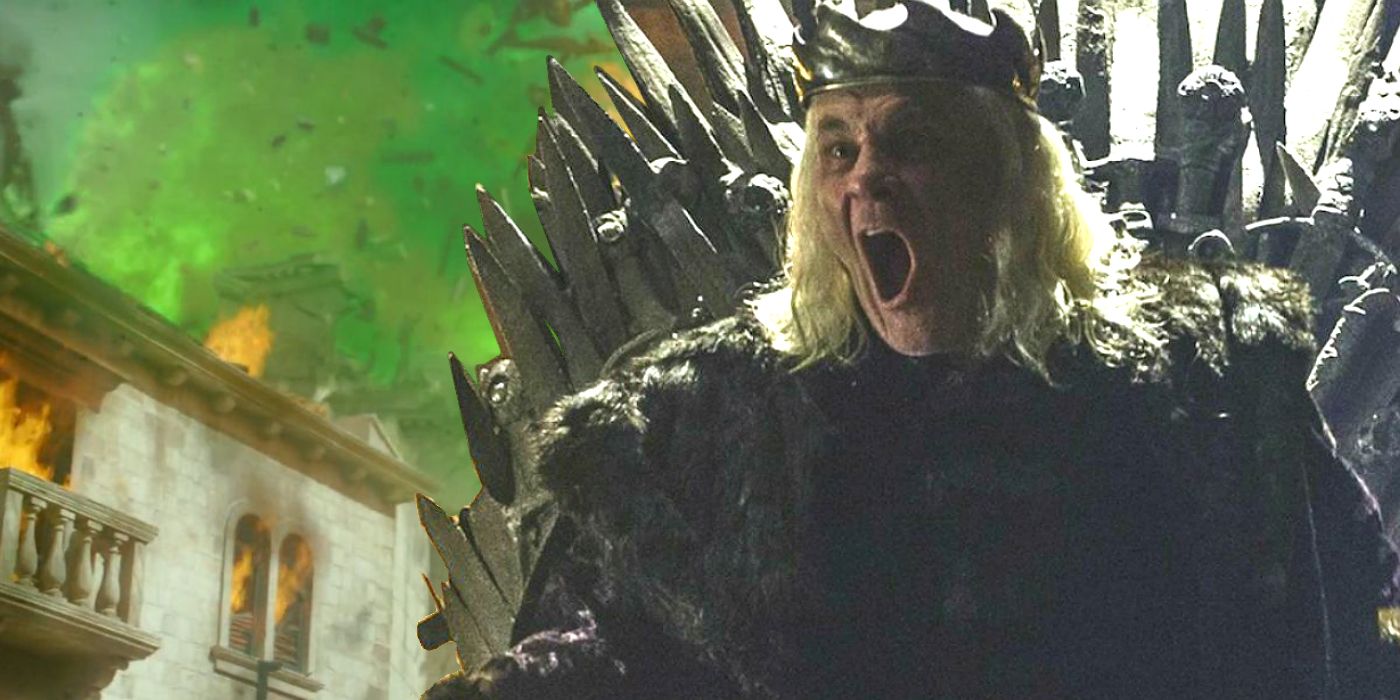Context and Characterization

The mad king got – The Mad King is a recurring character in literature, film, and television. He is typically depicted as a tyrannical ruler who is prone to fits of rage and violence. The origins of the Mad King’s madness are often left unexplained, but it is often hinted that he has been driven insane by the pressures of power or by some traumatic event in his past.
The Mad King’s reign was marked by paranoia and cruelty, and his banners reflected his madness. They depicted grotesque images of skulls and flames, and their colors were a sickly green and black. These banners were a symbol of the Mad King’s reign of terror, and they struck fear into the hearts of his subjects.
For more information on the Mad King’s banners, as well as those of other houses in Westeros, see our guide to game of thrones banners.
The Mad King’s madness has a profound impact on his actions. He is often unpredictable and irrational, and he is prone to making decisions that are harmful to himself and to his kingdom. In some cases, the Mad King’s madness has led to war and bloodshed.
The Mad King got progressively more unhinged as his reign went on, until he was finally overthrown and killed by Jaime Lannister. If you’re wondering what time Game of Thrones airs, you can find the answer here. The Mad King’s madness was a major factor in the outbreak of the War of the Five Kings, which ultimately led to the downfall of the Targaryen dynasty.
Interpretations of the Mad King’s Madness, The mad king got
There are many different interpretations of the Mad King’s madness. Some critics see him as a tragic figure who has been driven insane by the pressures of power. Others see him as a monster who is responsible for the suffering of his people. Still others see him as a symbol of the dangers of unchecked ambition.
The mad king got his way, but at a price. The brutality of blood and cheese left a lasting scar on the kingdom. The king’s madness deepened, and the realm was plunged into chaos. Yet, amidst the turmoil, there were whispers of resistance, a flicker of hope that the king’s reign of terror would not last forever.
The Mad King has been portrayed in a variety of ways in different media. In Shakespeare’s play “King Lear,” the Mad King is a tragic figure who is driven insane by his daughters’ betrayal. In the HBO television series “Game of Thrones,” the Mad King is a cruel and tyrannical ruler who is eventually overthrown by his own people.
Historical and Literary Parallels: The Mad King Got

The Mad King is a complex and enigmatic character, and his motivations and actions have been the subject of much debate. Some have drawn parallels between him and historical figures such as Nero, Caligula, and Vlad the Impaler, while others have seen similarities between him and literary characters such as Macbeth and Hamlet.
These parallels can help us to better understand the Mad King’s character and the forces that drive him. For example, Nero was a Roman emperor who was known for his cruelty and extravagance. He is said to have ordered the deaths of his own mother and wife, and he is also believed to have set fire to Rome in order to build a new palace for himself. Caligula was another Roman emperor who was known for his madness and tyranny. He is said to have made his horse a senator, and he is also believed to have slept with his sisters.
Vlad the Impaler was a Romanian prince who was known for his cruelty. He is said to have impaled his enemies on stakes and left their bodies to rot in the sun. Macbeth was a Scottish king who was driven to madness by his ambition. He murdered the king and took the throne for himself, but he was eventually haunted by guilt and madness.
Hamlet was a Danish prince who was driven to madness by his grief over the death of his father. He is said to have seen the ghost of his father and to have heard voices that drove him to the brink of insanity. These are just a few of the historical and literary figures who have been compared to the Mad King. By understanding these parallels, we can gain a deeper understanding of the character’s motivations and actions.
Real-World Events and Historical Contexts
The Mad King is a fictional character, but he is based on real-world events and historical contexts. The character is said to have been inspired by the reign of King George III of England, who was known for his madness and tyranny. George III suffered from a mental illness that caused him to experience delusions and hallucinations. He was also known for his erratic behavior and his cruelty towards his subjects.
The Mad King is also said to have been inspired by the French Revolution. The French Revolution was a period of great upheaval and violence, and it is said to have had a profound impact on the Mad King’s character. The revolution led to the overthrow of the monarchy and the establishment of a republic. It also led to the deaths of thousands of people, including King Louis XVI and Marie Antoinette.
The Mad King is a complex and tragic character. He is a product of his time and circumstances, and his actions are a reflection of the madness and violence that surrounded him.
Symbolism and Allegory
The Mad King character in Eka Kurniawan’s novel is a multifaceted figure who embodies a complex web of symbolic meanings and allegorical interpretations. As a representation of the capricious and unpredictable nature of power, he symbolizes the dangers of unchecked authority and the fragility of human reason. Through his descent into madness, the Mad King exposes the dark underbelly of society, revealing the hidden fears and anxieties that lurk beneath the surface.
Allegory of Societal Issues
The Mad King’s madness can be seen as an allegory for the irrationality and violence that often permeate human societies. His erratic behavior and paranoid delusions reflect the irrationality that can grip entire societies, leading to mass hysteria, persecution, and war. The character serves as a warning against the dangers of allowing fear and superstition to cloud our judgment and drive us towards destructive actions.
Allegory of Psychological Issues
On a psychological level, the Mad King’s madness can be interpreted as a manifestation of the inner turmoil and fragmentation that can afflict the human psyche. His inability to distinguish between reality and delusion mirrors the psychological struggles faced by individuals who grapple with mental illness. Through the character of the Mad King, Kurniawan explores the complexities of the human mind and the fragility of our sanity.
In the annals of history, the tale of the mad king got is etched with infamy. His reign was a descent into chaos, marked by bizarre edicts and unhinged behavior. Like a tempestuous storm, he tore through the kingdom, leaving a trail of destruction in his wake.
Yet, amidst the madness, there were whispers of a hidden purpose, a grand design that only the mad king got could perceive. Read more about the enigmatic mad king got and the secrets that lie buried within his reign of insanity.
The Mad King’s reign of terror is still a haunting memory for the people of Westeros. But even as they try to rebuild their lives, a new threat looms on the horizon. A Knight of the Seven Kingdoms , a prequel series to Game of Thrones, will explore the events leading up to the Mad King’s fall and the rise of the Targaryen dynasty.
As the release date approaches, fans eagerly anticipate the return to the world of Westeros and the chance to delve deeper into its rich history and complex characters.